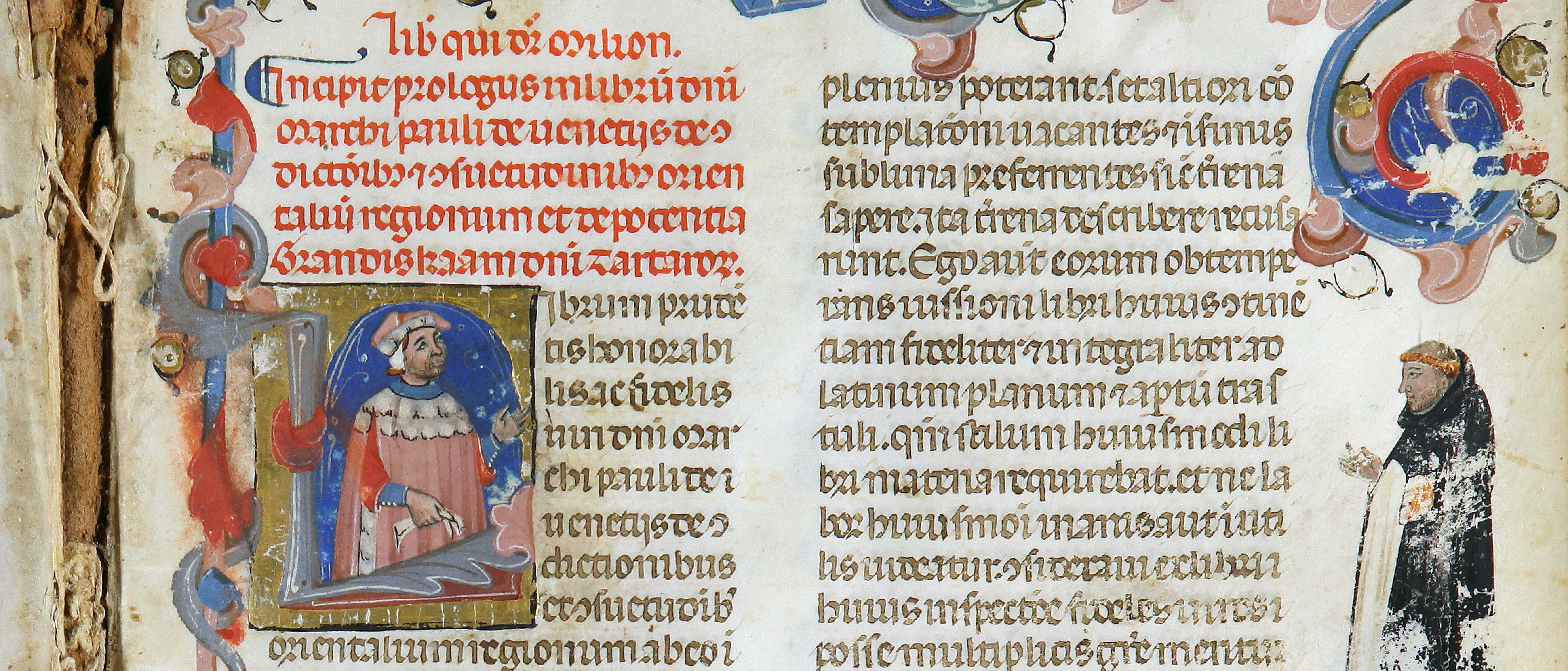
© Firenze, Biblioteca Nazionale Centrale, Conv. Soppr. C.VII.1170, fol. 1r.
The Marco Polo of Christopher Columbus
Francesco Pipino’s Latin Version of Il Milione
Funding organization: Austrian Science Fund (FWF)
Stand-Alone project: P 32723-G – €406,305.49
Project duration: 2022–2025
Principal investigator: Univ.-Prof. Dr. Mario Klarer
Project description
When Christopher Columbus embarked on the voyage that eventually brought the New World into the European orbit of perception, he was trying to find a new sea passage to Asia. It is therefore not surprising that Christopher Columbus equipped himself with knowledge about the Far East for his voyage to the Far West. One of the texts that Columbus used extensively was the Latin version of Marco Polo’s Travels. Marco Polo’s Il Milione was the most important source on the Far East during the late medieval and the early modern period, shaping the European image of Asia, as well as the Americas, for centuries to come.
What is most surprising is that such a central source text is not available as anything resembling an edition—let alone a reliable edition or (even less so) a critical edition. The Latin translation that the Dominican friar Francesco Pipino carried out between 1310 and 1322 has been preserved in close to 60 manuscripts, thus outnumbering all other extant Polo manuscripts. No other version of Marco Polo’s account exerted more influence in the late medieval and early modern period than the Latin Pipino translation.
Given this situation, the Marco Polo project, under the direction of Prof. Mario Klarer, will pursue three independent but interrelated goals, all of which focus on Francesco Pipino’s Latin translation in particular, while at the same time mapping out the larger ramifications of the role and position of Pipino within the entire Marco Polo tradition:
- The team will use all extant fourteenth-century Pipino Polo manuscripts as the basis for producing an eclectic edition and English translation of the Latin Pipino version.
- An intratextual analysis will take into consideration Pipino’s Chronicon, a world history in which the author utilized large sections from Polo’s Travels. Pipino’s twofold use of Polo—for his Milione translation and for parts of his world chronicle—provides a unique case study for late medieval mechanisms of translation and textual appropriation.
- A larger intertextual investigation compares the Dominican Pipino translation to all other Latin versions as well as the Franco-Italian version—as the most important vernacular tradition—in order to trace its specific cultural, religious, and political agendas, as well as the legacy of Pipino’s translation in the works of other late medieval authors.
These interconnected editorial and interpretive efforts should provide the long-awaited philological basis for Marco Polo’s Milione in Latin within the context of fourteenth- and fifteenth-century processes of cultural and religious appropriation and dissemination.